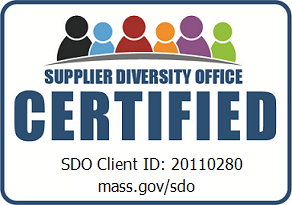In today’s dynamic educational landscape, schools—from k-12 to higher ed—must continually adapt to new challenges and opportunities. Whether introducing changes to the curriculum, altering program offerings, downsizing, or restructuring, one constant remains: effectively communicating is key to navigating transitions as smoothly as possible and avoiding potential issues that often arise with inconsistent or incomplete information.

Change, by its very nature, can be unsettling. Stakeholders—including faculty, students, parents, and staff—may feel anxious or uncertain about what lies ahead. Without clear, transparent, and consistent communication, these changes can lead to confusion and resistance; they may even harm an institution’s reputation. Failure to communicate clearly around a sensitive topic can sometimes even have deeper implications. This is why a strategic approach to communication is crucial when implementing any significant transformation within an educational institution.
4 Common Changes School Leaders May Face
Before diving into communication strategies, it’s crucial to understand some of the more common changes a school may undergo:
Curriculum Changes
Updating or overhauling the curriculum to include new subjects, teaching approaches, or testing requirements.Program Offerings
Introducing new programs or discontinuing existing ones based on market demand, accreditation requirements, or strategic goals.Downsizing and Layoffs
Reducing staff or faculty numbers due to budget constraints, decreased enrollment, or strategic realignments.Restructuring
Modifying the organizational structure to improve efficiency, responsiveness, or alignment with the institution’s mission and vision.
The Importance of Strategic Communication for Schools
When it comes to change, the message you deliver—as well as how and to whom you deliver it – is just as important as the change itself. Students, parents, faculty, staff, alumni, and donors expect transparency and communication from institutional leadership. It’s important to communicate the reasons for change, the impact it will have, and the steps involved in the transition. By doing so, and being as transparent as they are able, leaders can foster a culture of understanding and respect. Without doing so, audiences may feel disrespected—which could lead certain stakeholders to take any number of actions, including mass emails, petitions, calls for a hold or stop on donations, protests, and lawsuits, among others.
Stakeholder Involvement
One of the most effective strategies is to involve stakeholders early in the process. Whether the change involves a curriculum update, a new program offering, or a restructuring effort, engaging key stakeholders in the planning phase can help build a sense of allyship, ownership, and support. By seeking input from faculty, students, parents, and staff as part of the process, institutions can gain valuable insights and address potential concerns before they escalate.
Transparency and Clarity
Transparency is essential. When stakeholders understand the rationale behind a decision—whether it’s to align with industry trends, meet accreditation standards, or respond to budget constraints—they are more likely to support the change. Clearly communicating the reasons for change, along with the expected outcomes, can help demystify the process and reduce resistance.
Detailed Implementation Plans
A well-documented implementation plan is another critical component. This plan should outline the timeline, resources required, and steps involved in the transition. Providing stakeholders with a roadmap of what to expect—and when to expect it—can alleviate uncertainty and build trust. For instance, if a university is introducing a new curriculum, a detailed plan showing how and when the transition will occur, what resources will be available, and how it will benefit students can go a long way in securing buy-in from the audiences that matter most.
Empathy and Support
Change can be stressful, especially when it involves downsizing, layoffs, or restructuring. It’s important to approach communication with empathy and understanding. Don’t be a robot! Acknowledge the impact these changes will have on individuals and offer support where possible. This could include outplacement services for affected employees, counseling for those who need it, or workshops to help faculty and staff adjust to new roles or responsibilities. Compassionate communication—even when delivering difficult news—shows that the institution values its community and is committed to supporting them through the transition.
Consistent Messaging
Consistency in messaging is crucial. Mixed messages can create confusion and lead to misinformation, which can exacerbate fears and undermine trust. Whether communicating with faculty, students, or external stakeholders, it’s essential that the message remains consistent, clear, and aligned with the institution’s broader goals.
Highlighting Opportunities
Every change brings opportunities for growth and innovation. It’s important to communicate these opportunities clearly. For instance, if a program is being discontinued, take care to highlight new programs or pathways that align with current industry demands. If a department or program is being restructured, explain how it will lead to more efficient operations or better alignment with the institution’s mission. By focusing on the positive aspects of change, institutions can help stakeholders see the benefits rather than just the challenges—even and especially if they are unhappy with the change.
Engagement and Feedback
Change is not a one-time event; it’s an ongoing process. By creating forums for dialogue, institutions can listen to concerns, answer questions, and make necessary adjustments along the way. This continuous feedback loop not only helps to address issues as they arise but also fosters a culture of collaboration and transparency.
Positioning Your Institution for Success
In an era where change is constant, the ability to communicate effectively is more important than ever. If your institution is preparing to communicate changes, our crisis communications and PR teams are here to help. Check out our services here.



















